1. Introduction
Aluminum alloys, known for their light weight and excellent corrosion resistance, play a crucial role in various industries. Among the different series of aluminum alloys, the 5000 series stands out due to its high magnesium content, which enhances its strength and corrosion resistance properties. This series is widely used in marine environments, automotive industries, and construction due to its robust mechanical properties and ease of fabrication. This article provides an in-depth analysis of the 5000 series aluminum alloy, covering its chemical composition, physical, mechanical, thermal, and electrical properties, processing and fabrication methods, applications, advantages, limitations, and recent advancements.
2. Chemical Composition
The 5000 series aluminum alloys are primarily alloyed with magnesium. The magnesium content ranges from 0.2% to 6.2%, significantly improving the alloy’s strength and corrosion resistance. The typical chemical composition includes:
| Element | Range (%) | Average (%) |
|---|---|---|
| Aluminum (Al) | 88.2 – 99.8 | 95.5 |
| Magnesium (Mg) | 0.200 – 6.20 | 3.15 |
| Manganese (Mn) | 0.0100 – 1.80 | 0.410 |
| Chromium (Cr) | 0.0100 – 0.500 | 0.175 |
| Iron (Fe) | 0.00800 – 1.20 | 0.424 |
| Silicon (Si) | 0.0100 – 1.40 | 0.302 |
| Copper (Cu) | 0.0300 – 0.800 | 0.145 |
| Zinc (Zn) | 0.0100 – 2.80 | 0.260 |
| Titanium (Ti) | 0.00800 – 0.200 | 0.135 |
| Zirconium (Zr) | 0.0500 – 0.300 | 0.158 |
| Other Elements | Trace amounts |
The precise chemical composition can vary depending on the specific alloy within the 5000 series, designed to optimize certain properties for particular applications.
3. Physical Properties
The physical properties of 5000 series aluminum alloys are critical for their performance in various applications. These properties include density, hardness, and specific heat capacity.
| Property | Metric Range | Metric Average | English Range | English Average |
|---|---|---|---|---|
| Density | 0.0160 – 2.84 g/cc | 1.82 g/cc | 0.000579 – 0.103 lb/in³ | 0.0658 lb/in³ |
| Brinell Hardness | 28.0 – 185 | 84.9 | 28.0 – 185 | 84.9 |
| Knoop Hardness | 68.0 – 150 | 98.9 | 68.0 – 150 | 98.9 |
| Rockwell Hardness A | 35.4 – 46.8 | 39.2 | 35.4 – 46.8 | 39.2 |
| Rockwell Hardness B | 49.0 – 75.0 | 57.1 | 49.0 – 75.0 | 57.1 |
| Vickers Hardness | 46.0 – 137 | 87.6 | 46.0 – 137 | 87.6 |
| Specific Heat Capacity | 0.857 – 0.960 J/g-°C | 0.897 J/g-°C | 0.205 – 0.229 BTU/lb-°F | 0.214 BTU/lb-°F |
These physical properties make the 5000 series aluminum alloys suitable for applications where lightweight and durable materials are required.
4. Mechanical Properties
The mechanical properties of 5000 series aluminum alloys are essential for understanding their behavior under different loading conditions, such as tension, compression, and impact.
| Property | Metric Range | Metric Average | English Range | English Average |
|---|---|---|---|---|
| Ultimate Tensile Strength | 110 – 590 MPa | 327 MPa | 16000 – 85600 psi | 47430 psi |
| Yield Tensile Strength | 40.0 – 540 MPa | 239 MPa | 5800 – 78300 psi | 34675 psi |
| Elongation at Break | 0.5 – 35.0% | 11.9% | 0.5 – 35.0% | 11.9% |
| Modulus of Elasticity | 68.9 – 73.0 GPa | 70.3 GPa | 10000 – 10600 ksi | 10200 ksi |
| Compressive Yield Strength | 0.138 – 325 MPa | 15.9 MPa | 20.0 – 47100 psi | 23060 psi |
| Shear Strength | 0.138 – 270 MPa | 31.1 MPa | 20.0 – 39200 psi | 20600 psi |
| Fatigue Strength | 82.7 – 365 MPa | 150 MPa | 12000 – 52900 psi | 32450 psi |
These mechanical properties ensure that 5000 series aluminum alloys can be used in structural applications where high strength and good ductility are required.
5. Thermal Properties
Thermal properties are crucial for applications involving significant temperature changes. The 5000 series aluminum alloys exhibit the following thermal properties:
| Property | Metric Range | Metric Average | English Range | English Average |
|---|---|---|---|---|
| Coefficient of Thermal Expansion (CTE) | 21.8 – 26.1 µm/m-°C | 24.2 µm/m-°C | 12.1 – 14.5 µin/in-°F | 13.4 µin/in-°F |
| Thermal Conductivity | 105 – 205 W/m-K | 141 W/m-K | 729 – 1420 BTU-in/hr-ft²-°F | 975 BTU-in/hr-ft²-°F |
| Melting Point | 568 – 657 °C | 623 °C | 1060 – 1220 °F | 1153 °F |
| Specific Heat Capacity | 0.857 – 0.960 J/g-°C | 0.897 J/g-°C | 0.205 – 0.229 BTU/lb-°F | 0.214 BTU/lb-°F |
These thermal properties make 5000 series aluminum alloys suitable for heat exchangers, automotive radiators, and other applications requiring efficient thermal management.
6. Electrical Properties
Electrical properties are significant for applications in the electrical and electronic industries. Key electrical properties of 5000 series aluminum alloys include:
| Property | Metric Range | Metric Average | English Range | English Average |
|---|---|---|---|---|
| Electrical Resistivity | 0.00000316 – 0.00000660 ohm-cm | 0.00000503 ohm-cm | 0.00000316 – 0.00000660 ohm-cm | 0.00000503 ohm-cm |
These properties ensure that 5000 series aluminum alloys can be used in electrical applications where both conductivity and corrosion resistance are essential.
7. Processing and Fabrication
5000 series aluminum alloys are known for their excellent workability, making them suitable for various fabrication techniques. Common processing methods include rolling, extrusion, forging, and welding.
Rolling
Rolling is a common method used to produce sheets and plates from 5000 series aluminum alloys. The alloy’s good formability allows it to be rolled into thin sheets without cracking.
Extrusion
Extrusion is used to create complex cross-sectional profiles. The high magnesium content improves the extrudability of 5000 series aluminum alloys, making them ideal for producing structural shapes, rods, and tubes.
Forging
Forging involves deforming the alloy using compressive forces, typically at high temperatures. The excellent forgeability of 5000 series aluminum alloys allows them to be used in manufacturing critical components like automotive suspension parts and aerospace fittings.
Welding
5000 series aluminum alloys exhibit good weldability, making them suitable for applications that require joining multiple components together. Welding methods commonly used include MIG (Metal Inert Gas) welding, TIG (Tungsten Inert Gas) welding, and resistance welding.
8. Applications
5000 series aluminum alloys find applications across various industries due to their excellent combination of properties.
Marine Industry
In the marine industry, 5000 series aluminum alloys are widely used due to their excellent corrosion resistance in seawater. Applications include:
- Shipbuilding (hulls, superstructures)
- Offshore structures
- Marine hardware
Automotive Industry
In the automotive industry, the lightweight nature and high strength of 5000 series aluminum alloys contribute to fuel efficiency and performance. Applications include:
- Body panels
- Structural components
- Heat exchangers
Construction Industry
In the construction industry, the durability and ease of fabrication of 5000 series aluminum alloys make them ideal for various structural applications. Applications include:
- Roofing and siding
- Structural frameworks
- Architectural panels
Aerospace Industry
In the aerospace industry, the combination of high strength, lightweight, and corrosion resistance makes 5000 series aluminum alloys suitable for critical components. Applications include:
- Aircraft skins
- Structural components
- Fuselage panels
Packaging Industry
In the packaging industry, the formability and corrosion resistance of 5000 series aluminum alloys are leveraged to create durable and reliable packaging solutions. Applications include:
- Beverage cans
- Foil wraps
- Food containers
9. Advantages
5000 series aluminum alloys offer several advantages that make them suitable for a wide range of applications:
- High Strength: The high magnesium content provides superior strength compared to other aluminum alloys.
- Excellent Corrosion Resistance: Outstanding resistance to corrosion, especially in marine environments.
- Good Weldability: Easily weldable using standard welding techniques.
- High Ductility: Excellent formability, allowing complex shapes to be manufactured without cracking.
- Lightweight: Lower density compared to other metals, contributing to weight reduction in various applications.
- Recyclable: Environmentally friendly and easily recyclable.
10. Limitations
Despite their numerous advantages, 5000 series aluminum alloys also have some limitations:
- Susceptibility to Stress Corrosion Cracking: Under certain conditions, they may be prone to stress corrosion cracking.
- Limited High-Temperature Performance: Not suitable for applications requiring prolonged exposure to high temperatures.
- Work Hardening: While beneficial for some applications, work hardening can make the material difficult to machine after cold working.
11. Recent Advancements
Recent advancements in 5000 series aluminum alloys focus on improving their properties and expanding their applications. Some notable advancements include:
Improved Alloy Formulations
Researchers are continuously developing new alloy formulations within the 5000 series to enhance specific properties such as strength, corrosion resistance, and formability.
Advanced Manufacturing Techniques
Innovations in manufacturing techniques, such as additive manufacturing and advanced forming processes, are expanding the capabilities of 5000 series aluminum alloys, allowing for more complex and precise components to be produced.
Surface Treatments
Advanced surface treatments and coatings are being developed to further enhance the corrosion resistance and wear properties of 5000 series aluminum alloys, making them suitable for even more demanding applications.
Recycling Technologies
Improvements in recycling technologies are making it easier to recover and reuse 5000 series aluminum alloys, reducing waste and environmental impact.
12. Conclusion
The 5000 series aluminum alloys offer a unique combination of properties that make them indispensable in various industries. Their high strength, excellent corrosion resistance, and good workability ensure they can meet the demands of applications ranging from marine and automotive to construction and aerospace. Continuous research and advancements are pushing the boundaries of what these alloys can achieve, making them a reliable choice for future innovations. Understanding the detailed properties, advantages, limitations, and recent developments of 5000 series aluminum alloys provides valuable insights for engineers, designers, and industry professionals seeking to leverage these materials in their projects.

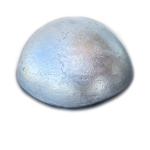
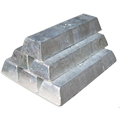
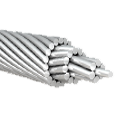

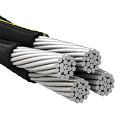
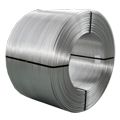
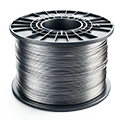
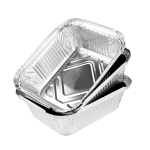



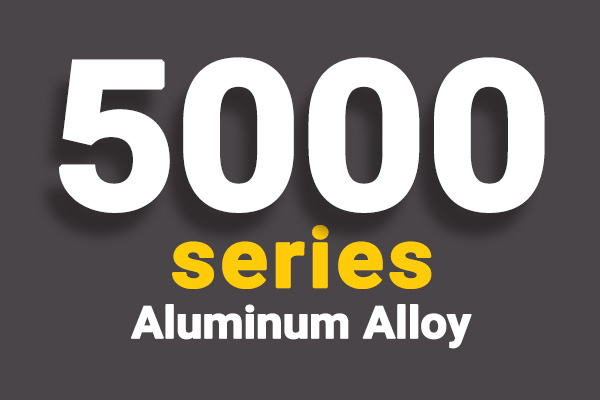




No comment